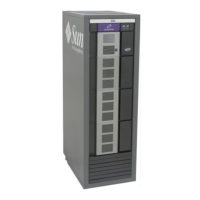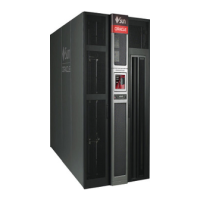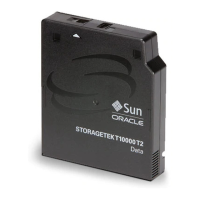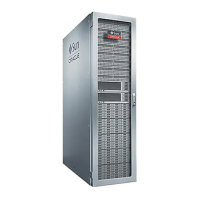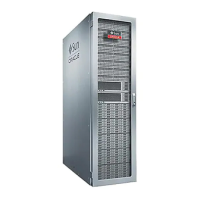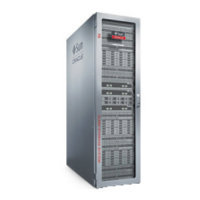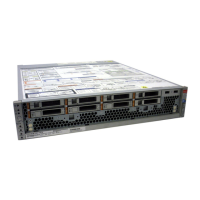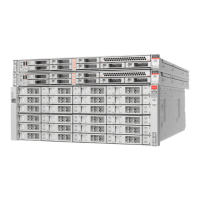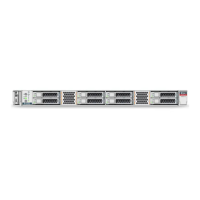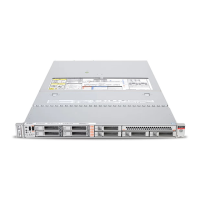Troubleshooting
7-18 StorageTek SL150 Modular Tape Library User's Guide
Use the Health Table
The library Health indicator at the top of every SL150 browser-based user interface
screen is your main diagnostic tool. If the Health indicator shows that the library is
Degraded or Failed, proceed as follows:
1. Click on the Degraded or Failed indicator.
The user interface displays a Library Health table with a row for each fault
detected on the system. Each row contains fields for the Date and Time, Fault
Code, and Fault Name associated with the problem, a prioritized list of Suspect
Components that might be causing the problem, and the Recommended Action for
correcting the problem.
2. For each fault record in the table, step through the suspect components listed in
the Fault Record.
3. If you close all open fault records and still cannot get the library into Operational
condition, go to
"Getting Parts and Technical Support" on page 7-24, check for
relevant knowledge articles, and, if you cannot find a resolution, open a service
request. Include fault codes and details of the actions that you have taken.
4. Otherwise, if desired, you can make sure that the library is functioning normally.
See
"Run a Library Self Test" on page 7-23.
Step Through the Suspect Components Listed in the Fault Record
1. Note the Fault Code for the record.
2. Note the first component listed in the Suspect Components field of the record (the
field may identify up to five components).
3. Note the corresponding Recommended Action.
4. If the Fault Code is 9030, if the Drive Auto Clean feature is enabled, and if the
drive listed in the Suspect Components field has a data tape mounted, wait. The
library will automatically attempt cleaning as soon as the tape is unmounted.
5. If the Fault Code is 9030, if the Drive Auto Clean feature is enabled, and if the fault
persists after a tape has been unmounted, cleaning media are unavailable or
expired. Load a new, LTO universal cleaning cartridge (type CU) into a reserved
slot (if available) or data slot. Then clean the drive listed in the Suspect
Components field using the library user interface.
6. If the Fault Code is 9030 and you are using host-managed drive cleaning, consult
the host application documentation and make sure that fresh cleaning media are
available. If necessary, clean the drive listed in the Suspect Components field using
the library user interface.
7. If the Fault Code is 9030 and you have been cleaning drives as needed using the
library user interface, make sure that fresh cleaning media are available. Then
clean the drive listed in the Suspect Components field.
8. If the Fault Code is 9108 and the Suspect Components field lists one or more
magazines, go to
"Locate and Remove a Cartridge that is Stuck in a Magazine Slot"
on page 7-20.
9. If the Fault Code is 9108 and the Suspect Components field lists one or more
drives, carry out the procedure
"Free a Cartridge that is Stuck in a Drive" on
page 7-21.
10. If the Fault Code falls in the range 9102-9107 or is code 9109, an obstruction may
be interfering with the robot. Carry out the procedure
"Locate and Clear
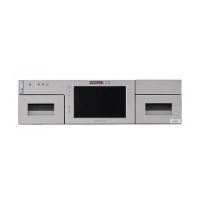
